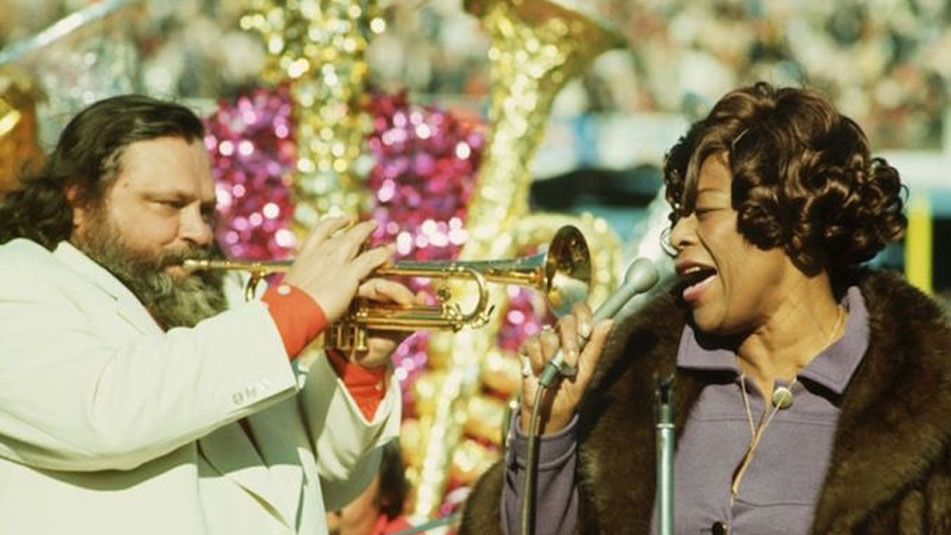The Super Bowl halftime show didn’t always have the most talked-about pop stars as headliners as it does today.
Years back, halftime shows were usually a showcase for the country’s top marching bands and drill teams to perform the national anthem, in addition to a separate halftime performance, according to WNYC.
However, it all changed with Super Bowl VI when Jazz legend Ella Fitzgerald became not only the first jazz artist to perform the halftime show but the first African-American female “celebrity” singer in Super Bowl history.

Following the death of Louis Armstrong in 1971, the 1972 Super Bowl was set to take place in New Orleans, the legendary performer’s hometown. The official halftime theme was declared a “Salute to Louis Armstrong.”
It was the first Super Bowl theme that paid tribute to an important figure especially one that happened to be black, and Fitzgerald was one of two women who were chosen to perform.
Carol Channing, an American actress, singer and comedian known for starring in Broadway and film musicals, was also selected. The two women became the first “celebrity” singers in Super Bowl history.
Even though Channing dazzled the fans when she took the stage to sing “When the Saints Go Marching In,” Fitzgerald’s performance was the game-changer.
She performed “Mack the Knife”, which got her into history books as the first African-American woman to perform at a Super Bowl halftime show.
Fitzgerald was joined by trumpeter, bandleader Al Hirt for the historic rendition of Satchmo’s classic “Mack the Knife.”

Unfortunately, Fitzgerald’s performance wasn’t recorded and the details surrounding the performance are scarce since there weren’t any documented interviews. Yet, the audience enjoyed her performance, marking it as one of the best.
Hailed as “The First Lady of Song,” Fitzgerald, with her unique, flexible, wide-ranging, accurate and ageless voice, was the most popular female jazz singer in the United States for more than half a century.
She could sing sultry ballads, sweet jazz and imitate every instrument in an orchestra. She worked with all the jazz greats, from Duke Ellington, Count Basie and Nat King Cole, to Frank Sinatra, Dizzy Gillespie, and Benny Goodman.
Born on April 25, 1917, as a troubled teenager following the death of those closest to her, Fitzgerald bunked off from school and lived on the streets.
It was in the summer of 1938 that she found real success with a 19th-century nursery rhyme that was brought up to date by Van Alexander who regularly sold arrangements to Chick Webb.
‘A-tisket A-tasket’ hit the right note with record buyers and it made No.1 on the American hit parade.
A year later, Webb passed away from spinal tuberculosis and for the next few years, Fitzgerald kept his orchestra together, billed as Ella Fitzgerald and her Famous Orchestra but things didn’t turn out so well.
Fitzgerald would later make her first appearance at Jazz at the Philharmonic in 1949, which marked a turnaround in her career. Fitzgerald continued to rise above all circumstances and uplifted herself in music.
In her lifetime, she won 13 Grammy awards and sold over 40 million albums. She performed at top venues all over the world and packed them to the hilt. Her audiences were as diverse as her vocal range, her website says.
Fitzgerald passed away on June 15, 1996.










